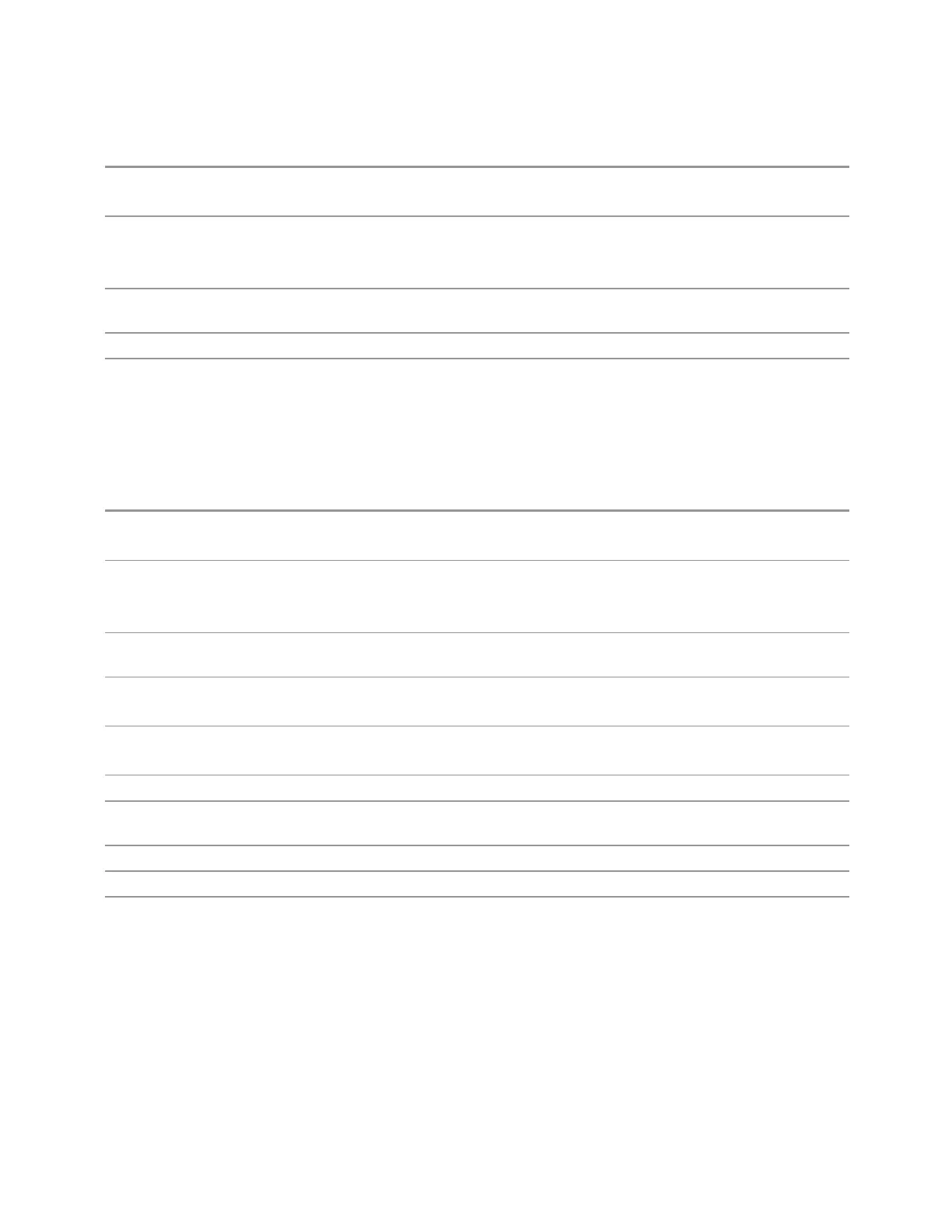3 Spectrum Analyzer Mode
3.13 Phase and Amplitude vs Time Measurement
Remote
Command
[:SENSe]:POWer:IQ:RANGe:AUTO OFF | ON | 0 | 1
[:SENSe]:POWer:IQ:RANGe:AUTO?
Example Put the I Range and Q Range in manual
:POW:IQ:RANG:AUTO OFF
:POW:IQ:RANG:AUTO?
Notes :POW:IQ:RANG:AUTO is an alternate form of :VOLT:IQ:RANG:AUTO, to maintain consistency
with I Range and Q Range, which support both the POWer and VOLTage forms of the command
Preset
ON
Range Auto | Man
I Range
The internal gain range for the I channel when the Input Path is I Only or I and I/Q.
Used for both the I and Q channels when the Input Path is I+jQ.
Remote
Command
[:SENSe]:VOLTage:IQ[:I]:RANGe[:UPPer] <voltage>
[:SENSe]:VOLTage:IQ[:I]:RANGe[:UPPer]?
Example Set the I Range to 0.5 V Peak
:VOLT:IQ:RANG 0.5 V
:VOLT:IQ:RANG?
Notes The numeric entries are mapped to the smallest gain range whose break point is greater than or equal
to the value, or 1V Peak if the value is greater than 1V
Couplings When "Q Same as I" on page 1974 is On, the I Range value will be copied to "Q Range" on page 1973
Changing the value also sets Range = Man
Preset Complex SPECtrum Measurement: 0.5 V Peak
All others: 1 V Peak
State Saved Saved in instrument state
Range 1 V Peak (10 dBm @ 50 Ω) | 0.5 V Peak (4 dBm @ 50Ω) | 0.25 V Peak (-2 dBm @ 50Ω) | 0.125 V Peak (-
8 dBm @ 50Ω)
Min 0.125 V
Max 1 V
Annotation The Range annotation replaces the RF Input context's "Atten" annotation
"Rng: <I Range>". When Range = Man the annotation is preceded by "#"
The I Range is not annotated in Input Path Q Only. When I Range and Q Range are the same, the
annotation is "Rng: <Range>". When I Range and Q Range are different and the Input Path is Ind I/Q,
the annotation is "Rng: <I Range>, <Q Range>" and "Peak" is removed from the text. Examples:
"Rng: 1 V Peak" the I Range is 1 V Peak
"Rng: 1 V, 0.5 V " the I Range is 1 V Peak and the Q Range is 0.5V Peak
This is an alternate form of the command to allow entry as a power.
1972 Spectrum Analyzer Mode User's &Programmer's Reference

